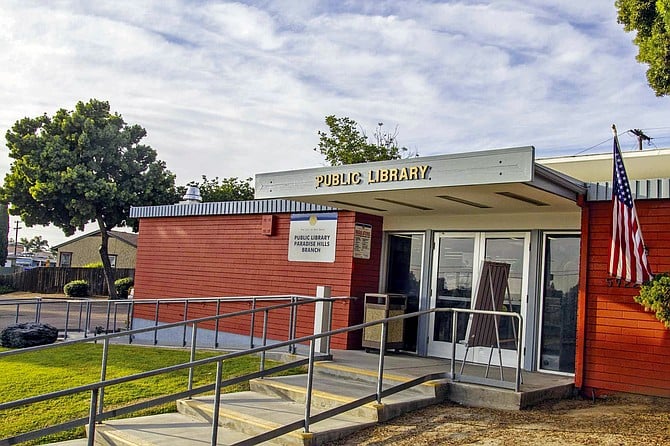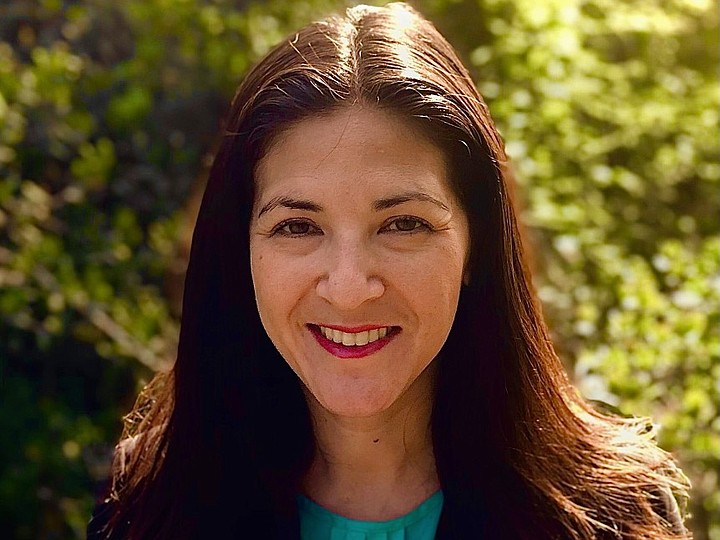 Facebook
Facebook
 X
X
 Instagram
Instagram
 TikTok
TikTok
 Youtube
Youtube

On August 1, the City Council approved Mayor Todd Gloria’s Build Better San Diego, an initiative that will improve services and infrastructure in lower income communities. Last summer, the city took action on parks. This time, the focus is on fire stations, mobility, and libraries. The initiative creates a new citywide developer impact fee program, meant to distribute funds more equitably, and set to go into effect on July 1, 2023.
Under the old system, the fee funds ended up being spent in areas that were the least in need of them, while communities that lacked the most basic infrastructure were neglected. Places that needed sidewalks, not bike lanes. "The amendments, I think, are long overdue," said councilmember Vivian Moreno regarding the underinvestment in older urban neighborhoods.
The developer fees, which range from a few thousand to over $100,000 per home, are just one of several fees the city uses to support infrastructure. "The fees are very high in some communities and very low in others," said city planning director Heidi Vonblum. When they're low, very little infrastructure can be provided. And when they're high, there are few opportunities to provide affordable housing, “creating two realities in the city." So the goal is to make all developer impact fees consistent across the city. An annual report will keep track of the fees and amount collected.
Libraries will benefit from a developer fee that will be used to fund various library capital improvements. The fee replaces the existing library component of community planning area-based development impact fees. It authorizes spending up to $500,000 in citywide funds to help deliver infrastructure "where needed." And it’s needed in lots of places: under the old Library Building Plan, more than half of the city’s 35 libraries were neglected. A 2016 facilities assessment found several branches in poor shape due to a library maintenance backlog: Kensington-Normal Heights, Linda Vista, Logan Heights, Ocean Beach, Paradise Hills, Rancho Bernardo, San Carlos, Serra Mesa, Skyline Hills, and University Heights.

Planning director Vonblum said the new program will create more efficiency and get projects done sooner. There is $220 million waiting to be unlocked for certain communities, she said, and the Build Better program allows the city to use these funds. Those unspent funds come from fees that were placed into dozens of separate neighborhood funds over the years, money that never quite stretched to cover planned improvement projects. "Over time, the idea is we spend down that money," Vonblum said, and "get out of the business of hoarding."
The new fees won't solve the deficit, noted Jillian Kissee, deputy director with the Office of the Independent Budget Analyst. That’s because the program doesn't increase funds; rather, it prioritizes projects.
Jesse O'Sullivan, the policy counsel for Circulate San Diego, praised how the new system incentivizes building smaller homes. Before, the fee was based on a building’s total volume rather than its total number of unites, creating what councilmember Joe LaCava called "the era of large-scale master-planned communities in San Diego."
Chris Cate, the only council member to vote against the program, said he hoped the city would prioritize communities targeted for density. According to Vonblum, the program will target investments in areas experiencing the most growth. Thomas Mulvaney, with Livable San Diego, criticized the city for "pushing huge amounts of density in the college area — taking developer fees with no guarantee any of it comes back."


On August 1, the City Council approved Mayor Todd Gloria’s Build Better San Diego, an initiative that will improve services and infrastructure in lower income communities. Last summer, the city took action on parks. This time, the focus is on fire stations, mobility, and libraries. The initiative creates a new citywide developer impact fee program, meant to distribute funds more equitably, and set to go into effect on July 1, 2023.
Under the old system, the fee funds ended up being spent in areas that were the least in need of them, while communities that lacked the most basic infrastructure were neglected. Places that needed sidewalks, not bike lanes. "The amendments, I think, are long overdue," said councilmember Vivian Moreno regarding the underinvestment in older urban neighborhoods.
The developer fees, which range from a few thousand to over $100,000 per home, are just one of several fees the city uses to support infrastructure. "The fees are very high in some communities and very low in others," said city planning director Heidi Vonblum. When they're low, very little infrastructure can be provided. And when they're high, there are few opportunities to provide affordable housing, “creating two realities in the city." So the goal is to make all developer impact fees consistent across the city. An annual report will keep track of the fees and amount collected.
Libraries will benefit from a developer fee that will be used to fund various library capital improvements. The fee replaces the existing library component of community planning area-based development impact fees. It authorizes spending up to $500,000 in citywide funds to help deliver infrastructure "where needed." And it’s needed in lots of places: under the old Library Building Plan, more than half of the city’s 35 libraries were neglected. A 2016 facilities assessment found several branches in poor shape due to a library maintenance backlog: Kensington-Normal Heights, Linda Vista, Logan Heights, Ocean Beach, Paradise Hills, Rancho Bernardo, San Carlos, Serra Mesa, Skyline Hills, and University Heights.

Planning director Vonblum said the new program will create more efficiency and get projects done sooner. There is $220 million waiting to be unlocked for certain communities, she said, and the Build Better program allows the city to use these funds. Those unspent funds come from fees that were placed into dozens of separate neighborhood funds over the years, money that never quite stretched to cover planned improvement projects. "Over time, the idea is we spend down that money," Vonblum said, and "get out of the business of hoarding."
The new fees won't solve the deficit, noted Jillian Kissee, deputy director with the Office of the Independent Budget Analyst. That’s because the program doesn't increase funds; rather, it prioritizes projects.
Jesse O'Sullivan, the policy counsel for Circulate San Diego, praised how the new system incentivizes building smaller homes. Before, the fee was based on a building’s total volume rather than its total number of unites, creating what councilmember Joe LaCava called "the era of large-scale master-planned communities in San Diego."
Chris Cate, the only council member to vote against the program, said he hoped the city would prioritize communities targeted for density. According to Vonblum, the program will target investments in areas experiencing the most growth. Thomas Mulvaney, with Livable San Diego, criticized the city for "pushing huge amounts of density in the college area — taking developer fees with no guarantee any of it comes back."
Comments